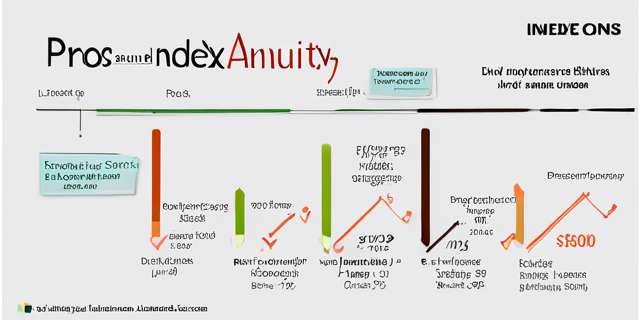Investing Basics – Stock Market 101 Guide

Investing in the stock market can seem daunting for beginners. With so many terms, strategies, and risks to consider, how do you even get started? This stock market guide breaks down the basics to provide the foundation you need to begin investing wisely.
Understanding Stocks and the Stock Market

Investing Basics – Stock Market 101 Guide
Before diving into the specifics of investing, it’s important to understand exactly what stocks and the stock market are.
What Are Stocks?
Stocks, also called shares or equity, represent ownership in a company. When you purchase stock in a company, you purchase a fractional ownership of that business. Stocks are traded on stock exchanges like the New York Stock Exchange (NYSE) and Nasdaq.
The price of a stock fluctuates based on supply, demand, earnings reports, market news, and other factors that impact a company’s perceived value. If the business performs well, demand for the stock typically rises which drives up the share price.
What Is the Stock Market?
The stock market refers to public stock exchanges where investors can buy and sell shares of stock. Some key points about the stock market include:
- The stock market provides companies access to capital in order to grow their business. This is done through the initial sale of stock in a public offering.
- It gives investors part ownership of a company.
- Overall stock prices reflect investors’ confidence in the economy as well as expectations for individual companies.
- For investors, it provides a way to grow wealth over long periods of time. Share prices and dividends generally rise as companies grow profits.
Now that you understand the basic concepts of stocks and stock exchanges, let’s explore how to actually invest in the market.
How to Invest in Stocks

Investing Basics – Stock Market 101 Guide
Investing in stocks involves following a systematic approach. Here is an overview of the key steps:
1. Determine Your Investing Goals
- What are you investing for? Retirement? Saving for a house? Building long-term wealth?
- How much time do you have to invest? Shorter timeframes generally call for more conservative investments.
- What is your risk tolerance? Can you stomach market volatility or do you need lower-risk investments?
Be clear on your purpose and timeline for investing prior to putting your money into the market.
2. Open a Brokerage Account
To purchase stocks you will need a brokerage account. This provides you access to the market. Some top brokers include Fidelity, Charles Schwab, TD Ameritrade, E*TRADE and more.
You can open an account directly through a broker’s website in a matter of minutes. You will need to provide personal information and your Social Security number.
3. Develop an Investing Strategy
With goals defined and a brokerage account open, it’s time to map out your investing approach. Common stock investing strategies include:
- Buy and hold: Purchasing stocks aligned to your goals and holding them long term, even decades. The goal is to take advantage of the natural rise of quality stocks over time.
- Value investing: Seeking out undervalued stocks trading lower than their actual worth that have significant upside.
- Growth investing: Identifying stocks with strong recent growth that is expected to continue expanding rapidly in the future.
- Income investing: Building a portfolio focused on stocks with consistent dividend payments. This provides regular income in addition to potential share price appreciation.
- Index investing: Mirroring a market index like the S&P 500 by purchasing ETFs or mutual funds tied to that index. This provides diversification across sectors and companies.
Decide if you want to develop your own stock portfolio picking individual stocks or work with a pre-made portfolio using funds and ETFs. Each approach has pros and cons.
4. Make Your First Trade
You are now ready to execute that first stock purchase. Within your brokerage account you simply need to:
- Search for your desired stock or fund by name or ticker symbol.
- Enter key details like number of shares and order type.
- Preview order to validate accuracy.
- Submit order and wait for execution which generally takes seconds.
Once the order executes, you will receive shares of stock added directly to your brokerage account. Congrats, you did it!
5. Manage and Monitor Investments
As a stock owner your job isn’t done once shares hit your account. To maximize returns you need to actively manage positions over time. Key aspects include:
- Review portfolios periodically: Evaluate overall diversification and return metrics compared to goals. Rebalance if needed.
- Track stock news: Keep an eye on earnings reports, leadership changes, product launches, and other events impacting your stocks.
- Know when to buy and sell: Use price targets and volatility tolerance to determine ideal times to add to or exit positions.
- Reinvest dividends: Consider utilizing dividend payments from stocks to purchase additional shares. This compounds returns over time through the power of reinvesting.
Properly managing stock investments leads to portfolio growth enabling the achievement of financial goals over the long run.
Understanding Stock Metrics and Analysis
With the basics of investing covered, let’s explore key metrics and analysis methods utilized by investors to evaluate stocks:
Fundamental Analysis
Fundamental analysis involves analyzing core financial statements and business metrics to determine the overall health of a business. Key items assessed include:
- Revenue and net income growth: Rising sales and profits signal a strong competitive position. Declines may indicate problems.
- Earnings per share (EPS): Increased EPS generally lifts a stock price. This shows greater profits spread across less shares.
- Profit margins: An indicator of operational efficiency. Wide margins mean greater profitability.
- Return on equity: Measures how much profit a company generates from shareholder equity. ROEs above 20% are ideal.
- Debt and cash levels: Companies overloaded with debt or low on cash raise bankruptcy risks.
Study these reports over recent years and quarters to spot positive or negative trajectories.
Technical Analysis
While fundamental analysis focuses on business performance, technical analysis evaluates recent stock price movements and trading volumes to forecast where prices might go next.
Investors utilize charts to analyze price patterns, trends, support and resistance levels, volume, volatility, moving averages, and other metrics. Examples include:
- Breakouts: Price moving above a defined resistance level signals potential for further upside.
- Pullbacks: Price dropping back to a prior support level may provide an attractive entry point.
- Oversold conditions: Following a sharp decline a bounce back up is expected, creating a buy opportunity.
Technical analysis helps traders enter and exit positions for short term gains. It complements fundamental analysis for a complete perspective.
Understanding Risk vs. Reward
While investing provides the opportunity to realize substantial profits, it does come with the risk of losses. All investments require thoroughly weighing potential gains against potential risks. Key concepts include:
Measuring Risk
Investment risk ties directly to volatility, or the fluctuation in prices over time. More extreme price swings in either direction equals greater risk. Technical analysis metrics like beta ratios, standard deviation, and drawdowns help quantify risk.
It’s also critical to consider business risks that could negatively impact stock prices. Things like competitive threats, management changes, product issues, lawsuits and economic conditions can quickly sink a stock’s value.
Balancing Risk and Reward
Greater risk generally brings greater reward potential. The key for investors is finding the right balance between the two based on personal risk tolerance and investment timeline.
For example, established “blue chip” stocks see modest share price gains but provide stability with lower drawdowns. Startups with a hot new product bring major upside potential but high volatility and failure rates.
Building a diversified portfolio across market caps, sectors, asset classes, and geographic regions helps smooth out risks. Staying invested for long periods lets rewards compound over time.
Managing and Reducing Risk
While risk is inherent to investing, there are several ways to manage and minimize it, including:
- Diversifying across multiple stocks and assets
- Utilizing stop-loss orders to limit potential losses on positions
- Starting small to limit capital at risk; don’t invest money you may need short-term
- Investing consistently over long timeframes (5-10+ years) to smooth volatility
- Utilizing hedging strategies via options contracts to cap downsides
Weighing risks and rewards constructively positions you to earn optimal returns.
Understanding Bull vs. Bear Markets
Stock market cycles oscillate between upward moving bull markets and downward moving bear markets. Understanding this cycle helps set appropriate expectations.
Bull Markets
A bull market refers to a sustained period with rising stock valuations
Some key characteristics of bull markets include:
- Lasting years – Bull runs have averaged 9 years over recent decades
- Share prices increase – Overall stock indexes rise over 20%+ from recent lows
- Positive investor sentiment – Optimism fuels further buying and demand
- Peak euphoria – At later stages “irrational exuberance” kicks in as rallies accelerate
- Reaching new highs – Market indexes and individual shares reach unprecedented levels
Bull markets generally align with periods of economic expansion and growth.
Bear Markets
In contrast, bear markets describe extended periods of declining share prices.
Typical features include:
- Falling 20% from highs – The technical threshold for a bear market is a 20% drop
- Investor pessimism – Negative sentiment fuels further selling
- Lasting months or years – Downtrends can persist for lengthy periods in severe cases
- Shaking out weak hands – Weak investors are forced to liquidate shares at a loss
- Finding the bottom – Attempts at rallies fail to sustain as buyers remain scarce
Bear markets tend to coincide with recessions and falling corporate earnings. They essentially reset sentiment and valuations to reasonable levels after excessive bull market rises.
Transitioning Between Cycles
There are rarely clear signals identifying exact transition points between cycles. These market phases tend to only be confirmed in hindsight once a new trend proves itself.
Reacting emotionally or attempting to time these rotations usually proves futile and costly. Maintaining rational optimism in bull runs and patient conviction during bear slides allows investors to navigate these cycles constructively.
Getting Started with Stock Investing
If you feel ready to begin investing in stocks, here is a concise process to go from zero experience to making your first trade.
1. Select a Brokerage
The first step is choosing an online brokerage account provider. Top all-around options include Fidelity, Charles Schwab and TD Ameritrade based on account offerings, commission-free ETFs and mutual funds, easy to use trading platforms and quality customer service.
You can compare brokerages at sites like NerdWallet or StockBrokers.com that rate and review the major providers. Look for $0 account minimums and commission-free stock and ETF trades if possible.
2. Fund Your Account
Most brokerages allow funding your account via electronic bank transfers, wire transfers, checks and depositing cash at physical branches if available. You generally want to maintain a cash balance to cover new purchases until they settle.
Aim to start even small at just $500-$1,000 to keep initial risk low as you build knowledge and experience.
3. Place Your First Trade
Now comes the exciting part – making that inaugural stock purchase. Focus your first investments on solid companies with good fundamentals versus speculation. Some ideal starter companies include stalwarts like:
- Apple (AAPL)
- Microsoft (MSFT)
- Disney (DIS)
- Procter & Gamble (PG)
Use free research tools on Yahoo Finance or Google to analyze financials and charts before deciding what and how much to buy.
4. Monitor and Learn
Check in routinely on your holdings while continuing to build investing knowledge. Listen to earnings calls, read annual reports, analyze price chart patterns. Develop and refine your strategy with notes on what works well or less so.
Investing takes patience and continuous learning. But with the right foundation, it can deliver long-term wealth building.
Conclusion
Investing in stocks provides a pathway to long-term wealth creation. While fluctuating values and risks require research and monitoring, markets trend higher enabling growing nest eggs.
This guide presented everything from defining stocks and exchanges to opening brokerage accounts to analyzing companies and managing portfolios. Take it step-by-step, be patient through ups and downs, continually expand knowledge, and stick to proven strategies.
Equipped with core investing basics, you now have the tools to build a prosperous future via the stock market. Best of luck with your investing journey ahead!
Frequently Asked Questions
What are blue chip stocks?
Blue chip stocks refer to large, reputable companies considered financially sound long-term holds. These are typically well-established household name companies trading on the Dow, S&P 500, or Nasdaq 100. Examples include Microsoft, Apple, Amazon, and other market leaders.
How much money do I need to start investing in stocks?
Technically you can invest any amount, even just $1, thanks to brokerages eliminating minimums and trading commissions. However most experts suggest starting with $500-1000 to properly diversify across several stocks while minimizing fees and simplifying money management.
What percentage of my portfolio should be in stocks?
A good guideline based on age and risk tolerance is to allocate:
- 80-100% in stocks for 30s or younger
- 60-80% in stocks for 40s
- 40-60% for 50s
- 20-40% for 60+
Individual circumstances like income needs and emotional ability to handle risk also impact ideal stock allocations though.
What is the best stock trading app for beginners?
Top stock trading apps welcoming for beginners thanks to $0 account minimums, commission-free trades, viewer-friendly interfaces and solid educational resources include:
- Fidelity – Get $100 bonus when depositing $50
- Webull – Get free stocks valued up to $2700
- Robinhood – Intuitive and easy to use
- Public – Built around social community engagement
Compare offerings to see which best fits your investing approach.
Should I trade stocks on my phone?
Thanks to substantial technology enhancements, trading stocks on your phone provides the same features and reliability as desktop experiences. Leading brokers offer robust, fully-featured mobile apps. This allows monitoring positions, executing orders and analyzing charts on-the-go. Just be aware of potential price data lags on phones









